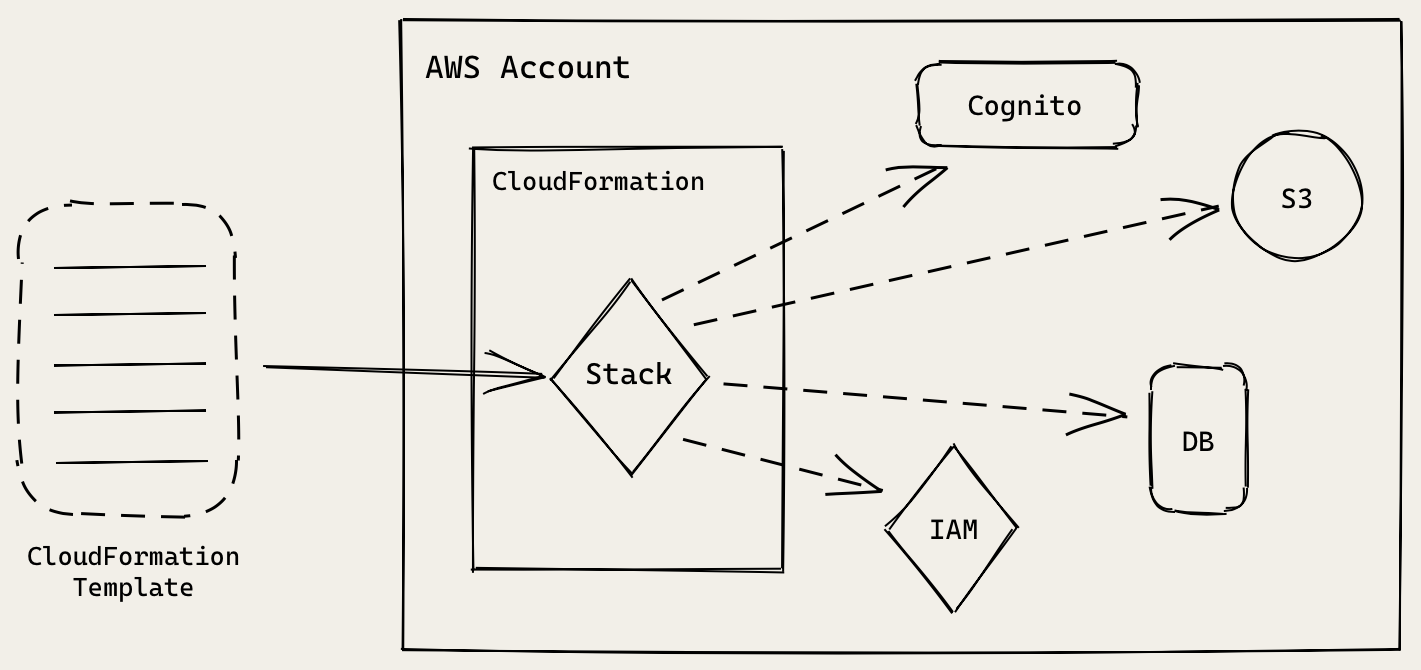What Is Infrastructure as Code
SST converts your infrastructure code into a CloudFormation template using AWS CDK (more on this later). This is a description of the infrastructure that you are trying to configure as a part of your serverless project. In our case we’ll be describing Lambda functions, API Gateway endpoints, DynamoDB tables, S3 buckets, etc.
While you can configure this using the AWS console, you’ll need to do a whole lot of clicking around. It’s much better to configure our infrastructure programmatically.
This general pattern is called Infrastructure as code and it has some massive benefits. Firstly, it allows us to simply replicate our setup with a couple of simple commands. Secondly, it is not as error prone as doing it by hand. Additionally, describing our entire infrastructure as code allows us to create multiple environments with ease. For example, you can create a dev environment where you can make and test all your changes as you work on it. And this can be kept separate from your production environment that your users are interacting with.
AWS CloudFormation
To do this we are going to be using AWS CloudFormation. CloudFormation is an AWS service that takes a template (written in JSON or YAML), and provisions your resources based on that.

It creates a CloudFormation stack from the submitted template, and that stack is directly tied to the resources that have been created. So if you remove the stack, the services that it created will be removed as well.
As an example, here is what the CloudFormation template for a DynamoDB table looks like.
Resources:
NotesTable:
Type: AWS::DynamoDB::Table
Properties:
TableName: ${self:custom.tableName}
AttributeDefinitions:
- AttributeName: userId
AttributeType: S
- AttributeName: noteId
AttributeType: S
KeySchema:
- AttributeName: userId
KeyType: HASH
- AttributeName: noteId
KeyType: RANGE
BillingMode: PAY_PER_REQUEST
Problems with CloudFormation
CloudFormation is great for defining your AWS resources. However it has a few major drawbacks.
In a CloudFormation template you need to define all the resources that your app needs. This includes quite a large number of minor resources that you won’t be directly interacting with. So your templates can easily be a few hundred lines long.
YAML and JSON are easy to get started with. But it can be really hard to maintain large CloudFormation templates. And since these are just simple definition files, it makes it hard to reuse and compose them.
Finally, the learning curve for CloudFormation templates can be really steep. You’ll find yourself constantly looking at the documentation to figure out how to define your resources.
Introducing AWS CDK
To fix these issues, AWS launched the AWS CDK project back in August 2018. It allows you to use modern programming languages like JavaScript or Python, instead of YAML or JSON. We’ll be using CDK in the coming chapters. So let’s take a quick look at how it works.
For help and discussion
Comments on this chapter